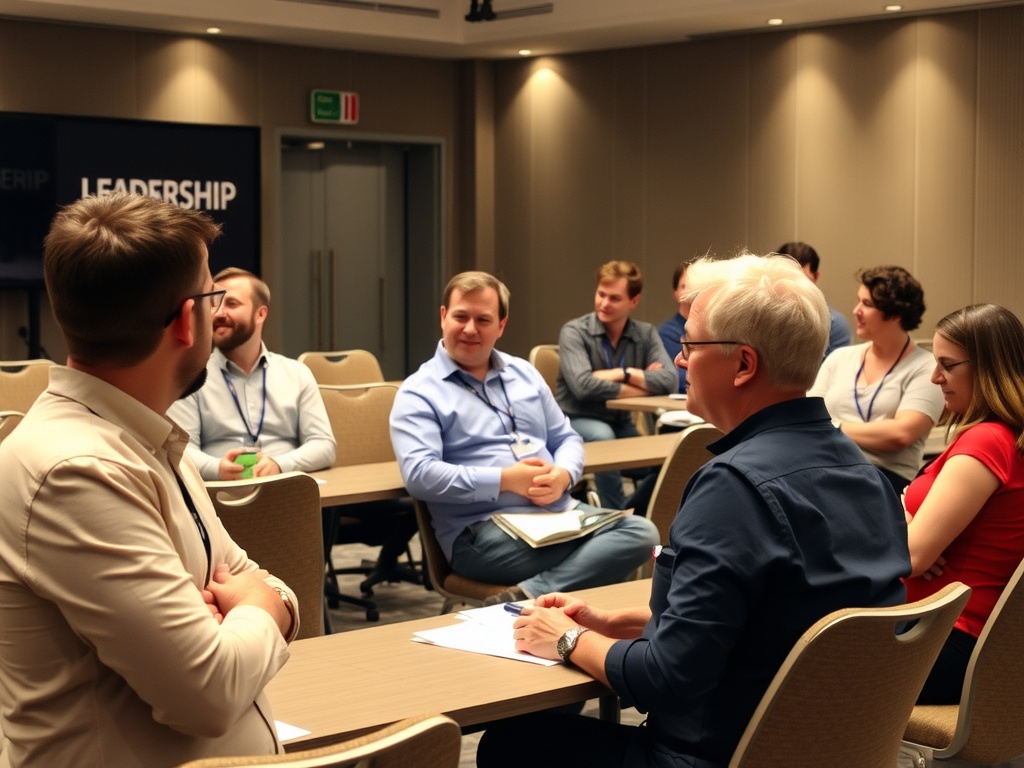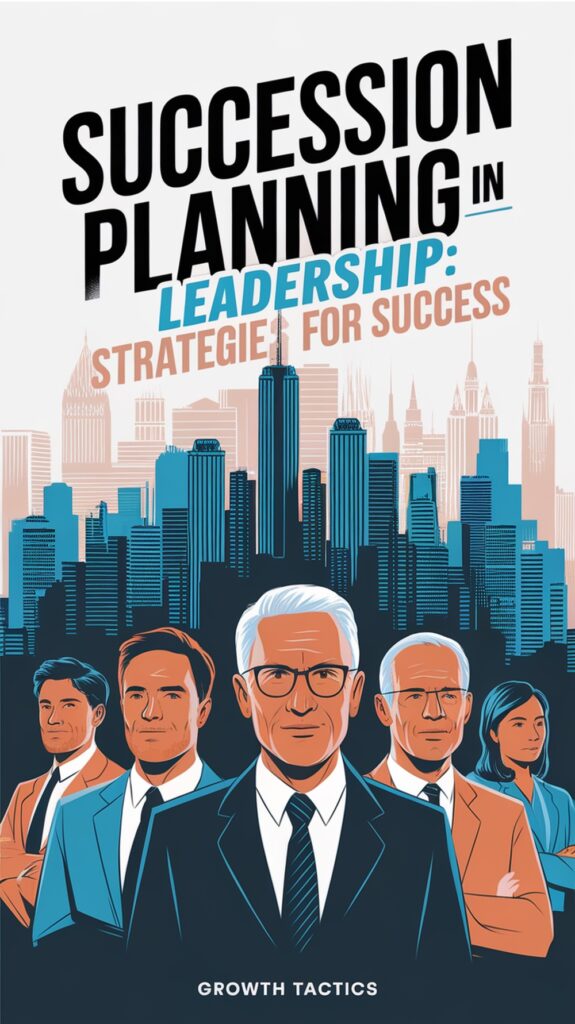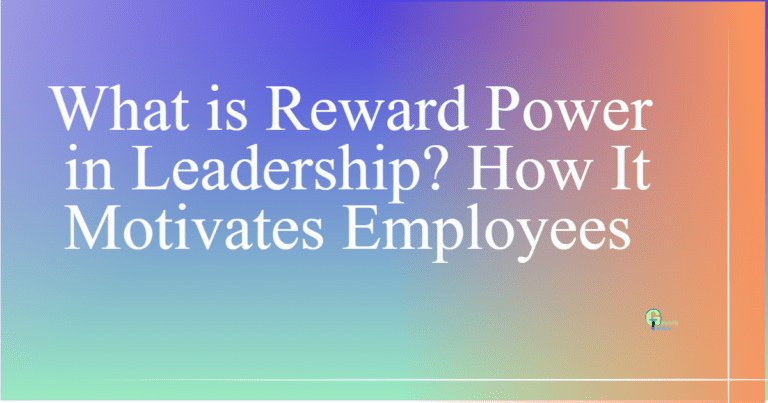Leadership succession planning safeguards your organization by equipping tomorrow’s leaders. It’s not just role plugging, it’s about creating a strong reserve of talent.
Whether you’re managing team transitions or cultivating long-term growth, strong succession planning safeguards your business from disruption while positioning your team members to excel.
Let’s dig into crafting a rock-solid plan that suits your specific needs.
Jump To Section
What is Succession Planning in Leadership?

Succession planning in the context of leadership refers to the organized effort to recognize, develop, and nurture emerging leaders to ensure a smooth transition into critical positions when the need arises. It’s about organizational stability, resilience, and growth.
Core Purpose
When a leader leaves under unexpected circumstances or retires, having a plan in place prevents disruption with well-prepared people ready to step in. Consider it an insurance policy that maintains your day-to-day running, even in uncertain times.
Strategic Value
Succession planning is not only practical, it’s strategic. It increases employee engagement by demonstrating that opportunities for growth are present. When your employees witness a transparent channel for growth, they’re more inspired and loyal to your organization. For example, leadership development programs communicate that you care about your internal talent and that you’re willing to invest in them.
It synchronizes leadership development with organizational objectives. By tailoring training to business objectives, you guarantee that future leaders are poised to propel the company’s vision.
It minimizes chaos from sudden leadership vacancies. Plan well and your organization won’t fall over when important leaders exit, but will instead thrive in a culture of rippling readiness and adaptability.
Common Myths
Succession planning is not just for big companies. Small businesses frequently dismiss it, thinking it’s not needed, but they’re just as susceptible to leadership shocks. Likewise, it’s not only for CEOs or senior positions. Every vital role, from project leaders to team leads, gains from a little bit of forward-thinking.
Succession planning, contrary to popular belief, is not a one-time event. It’s a continually evolving situation and needs to be updated frequently as plans and people change. Finally, it’s not just for retirements, it’s about being ready for anything from promotions to unexpected exits.
The Planning Process

Succession planning is about planning ahead. By beginning early, planning with long-term goals in mind, and including stakeholders, you can develop a plan that not only identifies future leaders but sets them up for success.
Identify Roles
Start by identifying the key positions that are mission-critical. These aren’t just executive slots but technical ones that keep the gears grinding. Focus on roles that affect business continuity. Consider which positions would disrupt the business if they were left empty.
What skills or capabilities will count as your organization grows? Succession planning isn’t just about the here and now. For instance, if your industry is transitioning to digital, that person in charge of your IT department may become more critical.
Define Competencies
Next, determine what qualities and behaviors are necessary to excel in each position. This isn’t all technical knowledge. Leadership traits such as decision-making, adaptability, and emotional intelligence are crucial. Match these skills with your company’s culture and objectives.
A competency framework will help you standardize expectations across roles. For example, if collaboration is an organizational value, all successors should be able to lead cross-functional teams. A structured competency model offers consistency and a clear roadmap for development.
Assess Talent
A structured talent assessment process is crucial. Start by evaluating your current workforce to identify individuals with leadership potential. Tools like 360-degree feedback, leadership assessments, and performance reviews can provide valuable insights into employees’ strengths and areas for growth.
It’s important to plan for readiness by developing a talent inventory. This keeps you aware of who is ready to step in immediately and who might require additional development. For instance, a star contributor in a technical role may require coaching to develop their strategic thinking capabilities before transitioning to a larger scope role.
Develop Candidates
Grooming successors means more than providing them with training modules. Tailored development plans that mix leadership training, mentorship, and real-world experience. Stretch assignments, such as spearheading a high-impact project or accepting a cross-functional initiative, are especially valuable for developing confidence and capability.
Measure Success
Measure progress with outputs such as readiness scores or leadership transition success rates. Evaluate development and tune based on feedback. We recommend revisiting your plan every month or two to keep it on track.
What Are Some Common Challenges and Pitfalls?

Every good plan faces some setbacks. The earlier you can recognize these setbacks, the better. These missteps can be internal or external, or from a lack of foresight.
Market Volatility
Economic and industry flux can cause succession planning to seem like shooting at a moving target. Plans are rarely flexible, and organizations are left scrambling when sudden shifts happen. As an example, a global economic downturn could compel you to put leadership transitions on hold or revise your standards for key positions.
Building flexibility into your strategy is crucial. Keep an eye on market trends and leverage data to predict future leadership requirements. This could involve seeding successors for positions that don’t yet exist but fit emerging needs. Without this foresight, your organization risks being caught flat-footed, particularly in fast-moving industries.
Digital Transformation
Tech is transforming leadership needs, but most orgs are missing it. Leaders need more than management; they need digital fluency and innovation. Neglecting to arm your successors with these instruments can leave you in the dust.
Resistance to change from leadership teams is another hurdle. Counter this by incorporating digital skills training into development programs. For example, future leaders might shadow IT professionals or attend workshops on cutting-edge technologies. Leverage digital tools to optimize succession planning. For example, using talent analytics to pinpoint high-potential candidates can help set you up for success.
Internal Blind Spots
A lot of companies confine succession planning to their executives. This tunnel vision can leave holes in readiness, particularly if middle management isn’t ready to fill upper-echelon roles. Assumptions, such as assuming a star player will make a great leader, can backfire.
Is There Anything Else You Need to Consider?

Succession planning isn’t just about picking the next leader, it’s about readying the organization for transitions with its values, strategy, and operations intact. If you’re going to do well, you have to deal with some deeper things at work here.
Cultural Fit
A candidate’s alignment with your organizational culture is non-negotiable. Leaders are not just decision-makers; they’re the embodiment of your values. Assess how well potential successors share the organization’s core principles. This can be done through interviews, behavioral assessments, or observing them in action.
It’s important to consider how potential leaders integrate with your culture. Will they fit the existing dynamic, or will their leadership style cause tension? For instance, a data-driven leader might flounder in a culture that prizes intuition and creativity.
Emotional Readiness
Leadership is as much visceral as it is thoughtful. They can’t break under pressure. Think of their capacity to seize fluid, nuanced social and organizational challenges.
It’s worth investing in EQ development for future leaders. EQ training hones abilities such as empathy, conflict resolution, and self-regulation, all essential for leadership. For example, a successor with strong EQ will more readily steer team morale through uncertain transitions.
Equally important is preparing for the psychological challenges of leadership. Successors need to be coached on decision-making under pressure and building confidence in their leadership voice. Without which, even great leaders can stumble.
How Do We Develop Future Leaders?

Succession planning isn’t an automatic result of having leadership potential in an organization. If you concentrate on capability building, experiential learning, and structured feedback, then you’ll develop your organization for long-term success.
Here are some ways you can do that:
Mentorship
Pairing potential leaders with experienced mentors is one of the most powerful ways to develop future leaders. Mentorship establishes a critical transfer of institutional knowledge, offering direct experience about decision making, culture, and leadership struggles. A great mentorship relationship nurtures personal development, providing personalized guidance that encourages young leaders to identify and fill their areas of weakness.
Shadowing opportunities can enhance this experience, permitting potential leaders to witness experienced professionals in action, absorbing lessons on what to emulate and what not to.
Coaching
Personalized coaching is another foundation of leadership development. Coaching hones critical skills such as strategic thinking, effective communication, and decision-making. It’s not about generic advice. Coaching needs to be personalized to the individual, nurturing confidence and leadership presence over time.
Imagine coaching as a mirror: it reflects strengths while illuminating areas for improvement. For example, weekly coaching could be around increasing team collaboration or presenting skills. Regular check-ins keep progress on your radar and allow you to adapt based on feedback and evolution.
Experiential Learning
Experiential learning closes the gap between theory and practice by surrounding aspiring leaders in real-world challenges. Job rotations, special projects, or leadership development workshops provide practical experience to try out and sharpen skills.
Take a high-potential employee and put them in charge of a cross-functional project. This develops not just problem-solving, but also exposure to new viewpoints and new responsibilities. Putting them through real-world challenges, with case studies or role-playing, will condition them to the challenges of leadership.
Continuous Feedback and Self-Improvement
Leadership development flourishes with feedback. Routine performance check-ins, paired with self-evaluation, engender a cycle of constant learning. This keeps future leaders nimble and goal-oriented. Succession plans are best kept fresh by revisiting and reconsidering them on a regular basis.
Future-Proofing Leadership
It takes years to build a leadership pipeline, not months. Future-proofing leadership doesn’t exist as a single, isolated moment; it’s an ongoing, dynamic process.
Fostering Resilience
Leadership now requires the capacity to flourish in uncertainty. Leaders need to be equipped not just to weather the crisis but to lead through it. This includes developing cognitive flexibility, training leaders to pivot on a dime, and making effective decisions under pressure. Stress management, whether through mindfulness training or resilience coaching, can help leaders remain grounded.
Beyond individual skills, resilience should reverberate throughout the organization. A culture of resilience, powered by open communication, mutual accountability, and continuous learning, future-proofs the team for swift transformations.
Leveraging Analytics
Data-driven insights are key to identifying leadership gaps and predicting future needs. Analytics might follow workforce trends–turnover or skills shortages, for example–to direct succession efforts. For instance, a healthcare provider could leverage analytics to predict retirements and plan replacements months in advance.
Metrics provide a feedback loop for leadership development programs. By tracking outcomes, such as employee engagement or team performance, organizations can adjust their strategies. Analytics ultimately optimize the entire succession planning process, making it more precise and effective.
Conclusion
Succession planning isn’t only about change. It’s about resilience, about thriving, no matter what the future holds. By prioritizing talent identification, leadership development, and confronting challenges, you establish a plan that serves not only your team but the business overall.
The trick is to think about succession planning as a process, not a project. Be proactive, be strategic, invest in your talent, and create an environment where future leaders can develop with confidence.
Keep in mind, remarkable leadership doesn’t occur by accident; it occurs intentionally. So, go ahead and make that next step. Initiate the discussion, polish your strategy, and prepare your organization for sustained success. If you enjoyed this, please share and subscribe for more!








